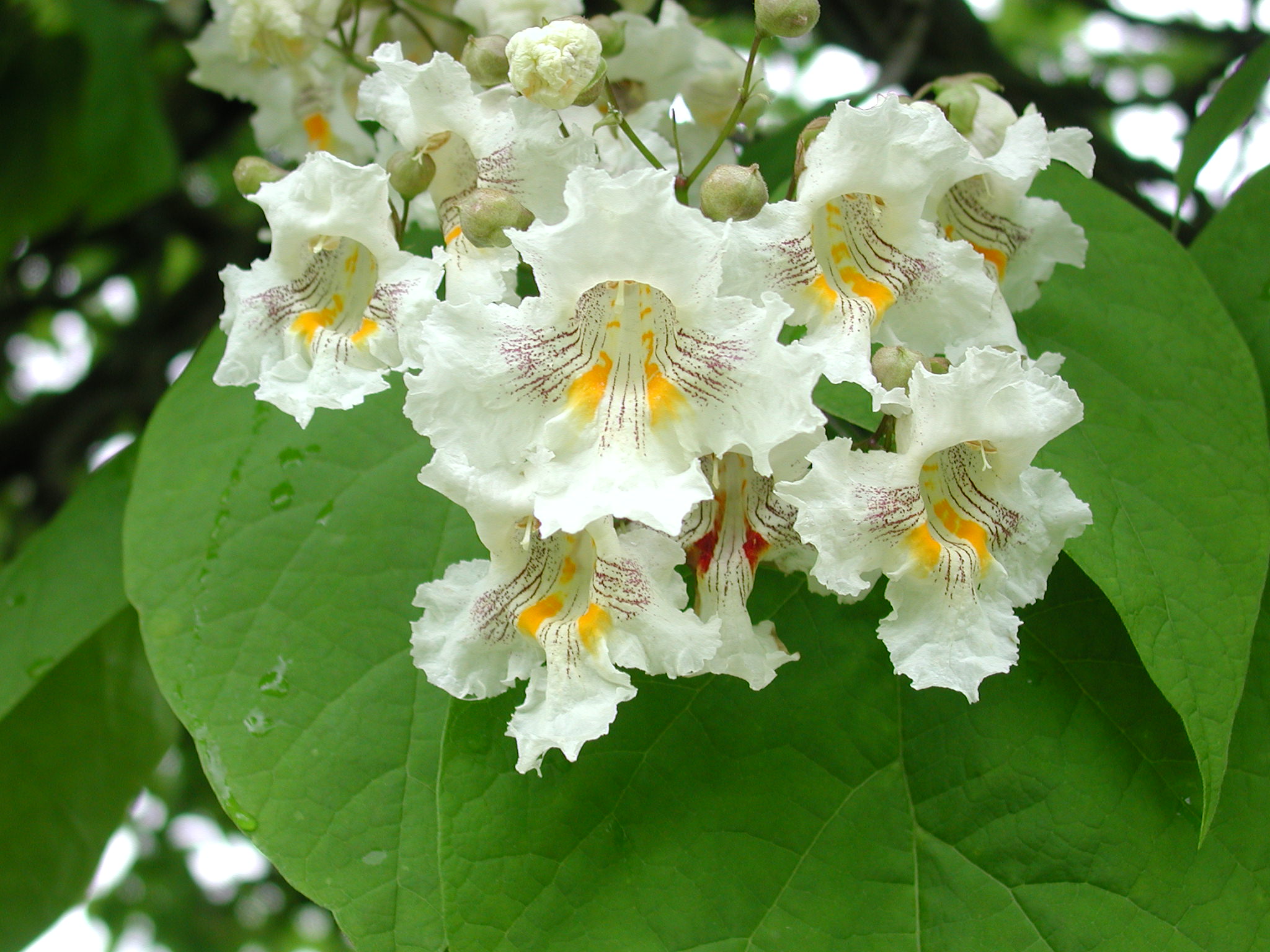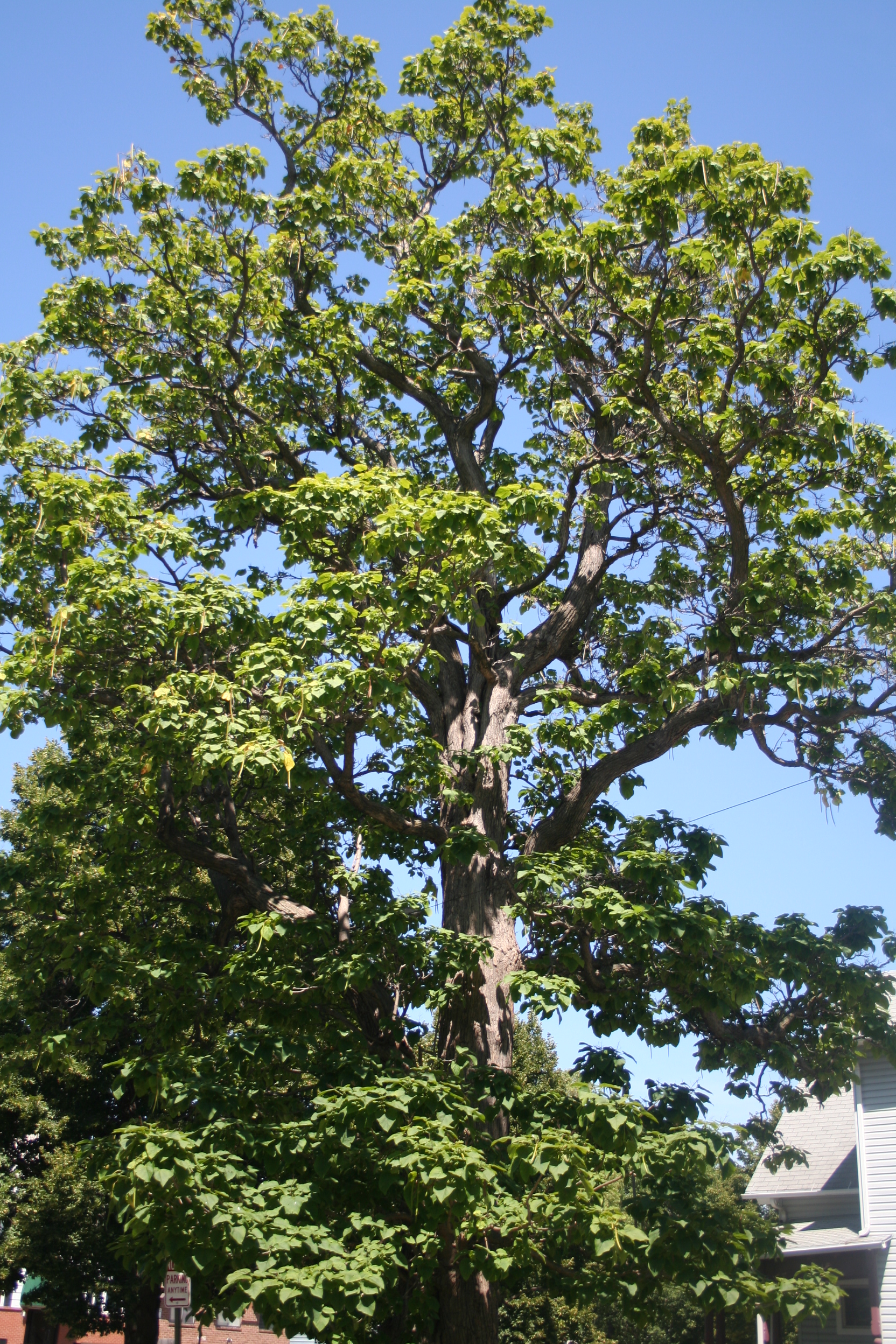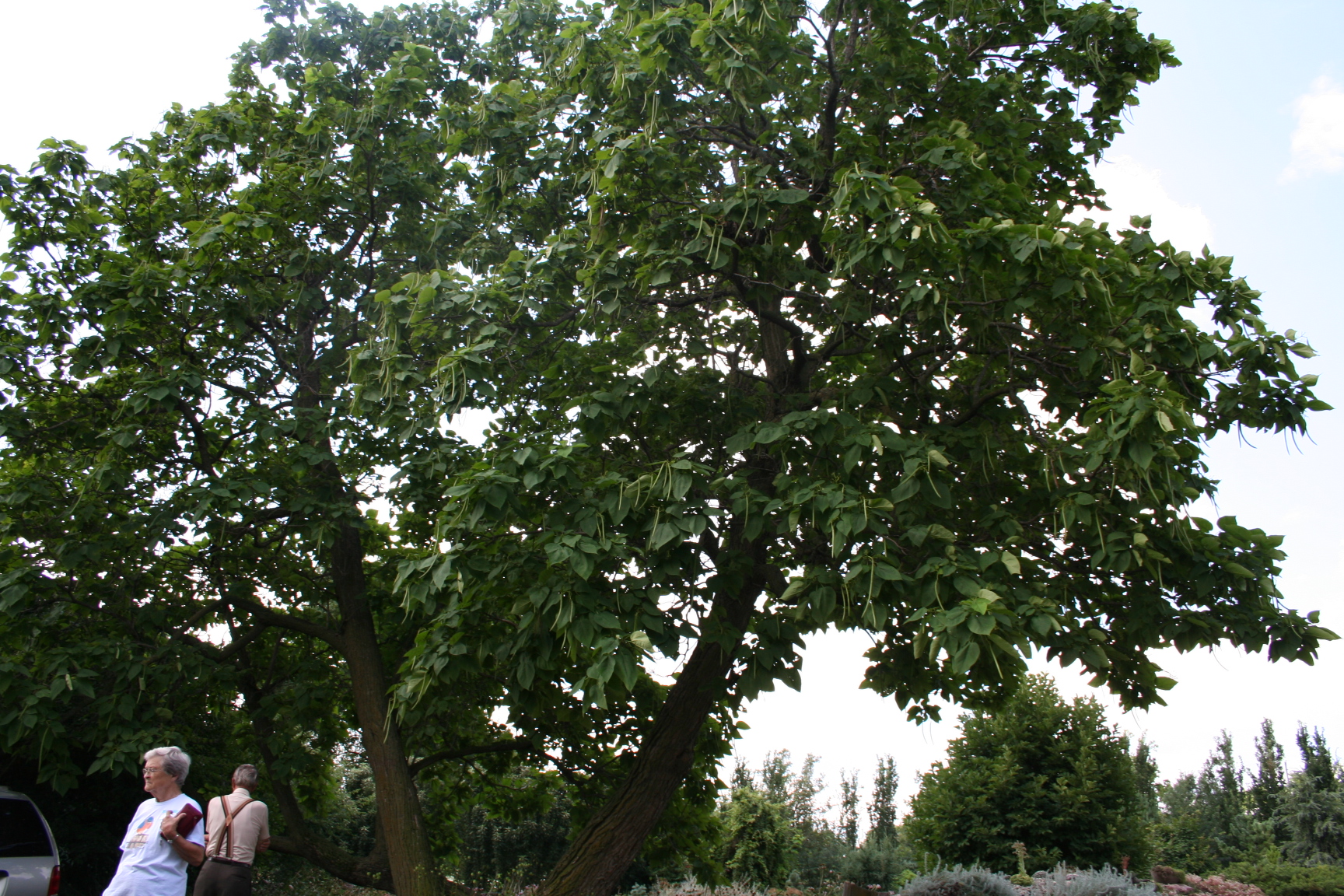Catalpa, Northern
Catalpa speciosa, Deciduous
Northern catalpa is primarily used today as a large ornamental shade tree. It is widely planted in urban areas as a street and lawn tree. Conservation uses include plantings in mined-land reclamation projects and shelterbelts.

Where To Grow

Size at Maturity
| Tree Height | Tree Spread |
| 40-70' | 30-50' |
Tree Characteristics
It is tall with an irregular, open-rounded to narrow-oval crown. This tree comes into leaf very late in the spring and it is one of the first to lose its leaves in the fall. Its longevity is about 60 years. Positive attributes of catalpa include its drought tolerance, soil adaptability, fast growth rate, attractive flowers, and distinctive long seed pods. The tree bark ranges from scaly to ridged, to blocky plates. On young tree seedlings, the bark is thin and easily damaged by impact, or rodent.
The flowers of catalpa are perfect. Flowering takes place in late spring to early summer. They occur as large clusters of showy, white, bell-shaped corollas of 5 lobes with ruffled edges and yellow, orange or purple interior spotting or streaking.
Wildlife Benefits
The flowers are cross-pollinated by bees and various moths that are nocturnal. Other insects such as skippers, ants, and flies are also visitors but aren't effective cross-pollinators.
Additional Considerations
When placed as an ornamental in a yard setting, care must be taken to ensure it is not too close to a building, fence, property line or septic system. Ample space should be provided to let it reach a mature height.
It is an invasive, weedy tree which escapes cultivation easily. The flowers, long seedpods, and seeds fall down from spring through winter and create a mess on the ground anywhere near the tree. Its brittle wood makes its branches subject to wind and ice damage.
Interesting Facts
It is sometimes planted to attract the green catalpa worms, which are prized fish bait. These caterpillars can be frozen and used as bait at a later time.
References
- Tips for planting success
- NRCS Plant Guide
- Developed by Justin Evertson, Kyle Martens, and Denise Wally

